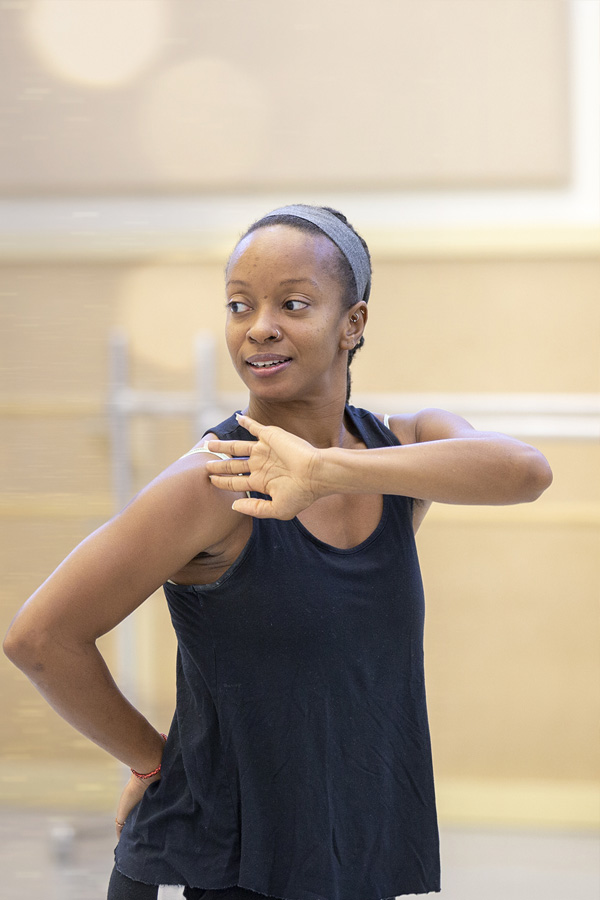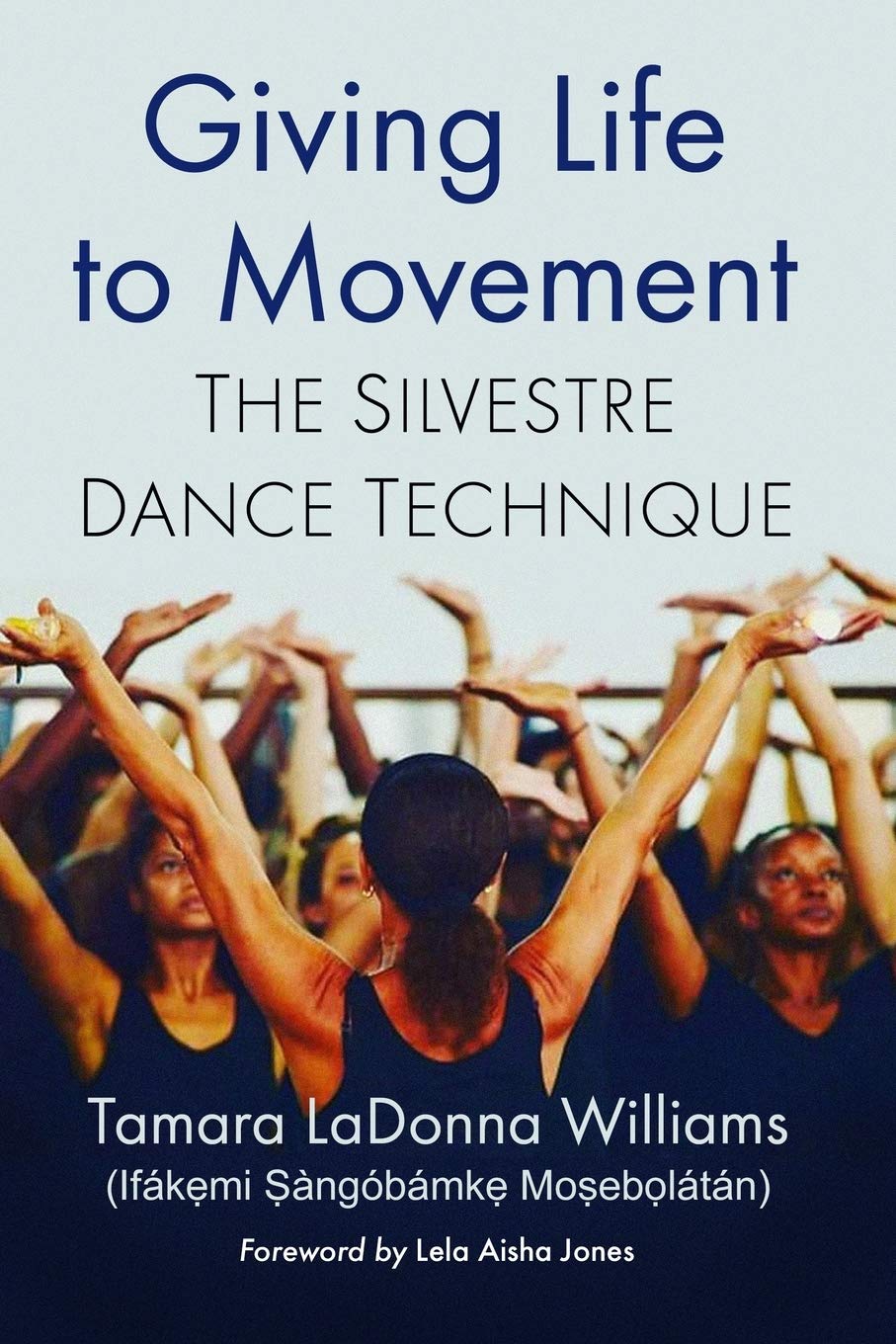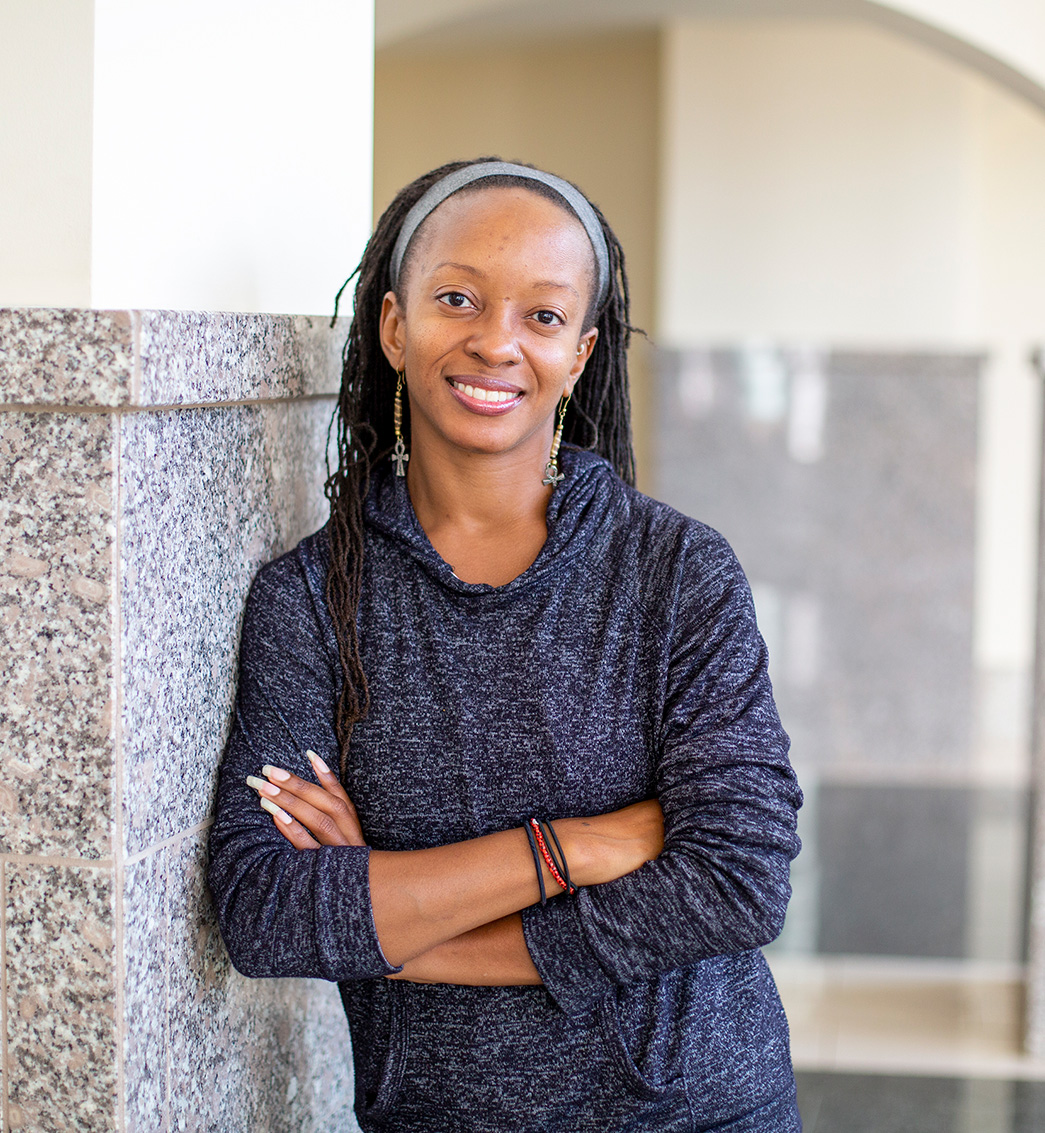Dancing with
the past
Charlotte associate professor Tamara Williams
is preserving history and culture through dance

Dancing with the past
Charlotte associate professor Tamara Williams is preserving history and culture through danceBy Meg Whalen
“The research comes from Black communities that usually have been marginalized but are rich in culture. It’s a way of giving back and to bridge the gap between academia and communities where we come from.”
– Tamara Williams
Tamara Williams approaches research with the fluidity of the tidal rivers in South Carolina’s Lowcountry, where she studies the diasporic dances of her ancestors. History, movement and meaning flow into her and out of her in a process that swirls the academic and the vernacular like streams of saltwater into fresh.
“That continuous circle that she creates, it leaps out from the scholarship and the research,” said Rubie Britt-Height, director of community relations at The Mint Museum in Charlotte. “From an academic standpoint, a community standpoint, a scholarly standpoint — she makes sure all those pieces are connected. She is constantly looking for ways to extend that invitation, that connectivity.”
The Mint Museum is one of numerous local venues where Williams, an associate professor of dance, goes to both teach and learn from the communities around her. There and in other spaces, such as the Bechtler Museum of Modern Art, the Harvey B. Gantt Center for African-American Art+Culture, Aldersgate Retirement Community and Camino Community Center, Williams brings professional artists and University students to perform, teach and talk about the dances of the African diaspora. Among her areas of focus are Ring Shout, descended from enslaved Americans in the southeastern United States, and the many African-Brazilian dance forms she has learned in more than a dozen years of studies in Brazil.
“The research comes from Black communities that usually have been marginalized but are rich in culture,” said Williams, who grew up in Georgia. “It’s a way of giving back and to bridge the gap between academia and communities where we come from.”
By Meg Whalen
“The research comes from Black communities that usually have been marginalized but are rich in culture. It’s a way of giving back and to bridge the gap between academia and communities where we come from.”
– Tamara Williams
Tamara Williams approaches research with the fluidity of the tidal rivers in South Carolina’s Lowcountry, where she studies the diasporic dances of her ancestors. History, movement and meaning flow into her and out of her in a process that swirls the academic and the vernacular like streams of saltwater into fresh.
“That continuous circle that she creates, it leaps out from the scholarship and the research,” said Rubie Britt-Height, director of community relations at The Mint Museum in Charlotte. “From an academic standpoint, a community standpoint, a scholarly standpoint — she makes sure all those pieces are connected. She is constantly looking for ways to extend that invitation, that connectivity.”
The Mint Museum is one of numerous local venues where Williams, an associate professor of dance, goes to both teach and learn from the communities around her. There and in other spaces, such as the Bechtler Museum of Modern Art, the Harvey B. Gantt Center for African-American Art+Culture, Aldersgate Retirement Community and Camino Community Center, Williams brings professional artists and University students to perform, teach and talk about the dances of the African diaspora. Among her areas of focus are Ring Shout, descended from enslaved Americans in the southeastern United States, and the many African-Brazilian dance forms she has learned in more than a dozen years of studies in Brazil.
“The research comes from Black communities that usually have been marginalized but are rich in culture,” said Williams, who grew up in Georgia. “It’s a way of giving back and to bridge the gap between academia and communities where we come from.”
Giving Life Momemtum

In March 2021, McFarland Press published her book “Giving Life to Movement: The Silvestre Dance Technique,” a study of the contemporary dance technique founded by Rosangela Silvestre as an extension of the spiritual dance traditions of enslaved Africans in Brazil. In her book, Williams, who has studied extensively with Silvestre in Salvador da Bahia, Brazil, situates the dance technique within the spiritual and cultural history of African Brazilians, and in particular, the political and social mobilization of Black Brazilians in the 1970s in Bahia. She then thoroughly investigates and analyzes the theory and practice of Silvestre Technique, both codifying the movement and highlighting its connection to resistance, empowerment and healing.
Last April, Williams brought Silvestre to Charlotte to teach dance classes at UNC Charlotte and uptown as part of the inaugural LAVAGEM! African Brazilian Festival that Williams and her husband, Luciano Xavier — also a native Brazilian — organized in partnership with The Mint Museum. Funded by a Cultural Visions Grant from the local Arts & Science Council funding agency and an Inclusive Excellence Grant from UNC Charlotte’s Office of Diversity and Inclusion, the festival was the first large-scale program of Bloco Afro Ayédùn, a new initiative Williams and Xavier launched in Charlotte modeled on Brazilian communities that celebrate Black and African heritage, spiritual practices, education, arts and cuisine.
Britt-Height was thrilled when Williams approached the Mint as a LAVAGEM! partner.
“We knew that we were doing something that was big, and I like being on the cutting edge of positive change,” she said.
More than 250 people performed or took classes during the four-day festival, which opened and closed at the Mint, and even more people watched and listened.
“You saw a beautiful array of people from all different backgrounds all there together wanting to grow and to learn and be expressive,” said Britt-Height.
Plans are already underway for the 2023 LAVAGEM! festival, and Williams says that she gets messages expressing interest “almost daily.” Both she and Britt-Height believe it will grow each year.
“There’s nothing like it that exists in the United States — especially on the East Coast,” said Williams.
In the meantime, Williams will continue to listen and learn and teach and perform in that constant tidal flow of knowledge. Funded by CultureBlocks grants from the ASC, Bloco Afro Ayédùn will provide “Come-Unity” programs around the city and will work with the Mint’s youth education program in Grier Heights. With her professional company, Moving Spirits, Williams is developing a large-scale work based on Ring Shout and directed a work for the Dance Department’s student concert in November. And she is writing a book about the LAVAGEM! festival — its Brazilian roots and history and how it connects to the Charlotte community.
“I am just excited that she does what she does with a level of energy that seems to be endless,” Britt-Height said. Williams says she is nurtured by all the activity. “When you’re really enjoying what you’re doing and sharing, it doesn’t feel like work. It really feels like an offering.”
In the meantime, Williams will continue to listen and learn and teach and perform in that constant tidal flow of knowledge. Funded by CultureBlocks grants from the ASC, Bloco Afro Ayédùn will provide “Come-Unity” programs around the city and will work with the Mint’s youth education program in Grier Heights. With her professional company, Moving Spirits, Williams is developing a large-scale work based on Ring Shout and directed a work for the Dance Department’s student concert in November. And she is writing a book about the LAVAGEM! festival — its Brazilian roots and history and how it connects to the Charlotte community.
“I am just excited that she does what she does with a level of energy that seems to be endless,” Britt-Height said. Williams says she is nurtured by all the activity. “When you’re really enjoying what you’re doing and sharing, it doesn’t feel like work. It really feels like an offering.”
Meg Whalen is director of communications for the College of Arts + Architecture.

